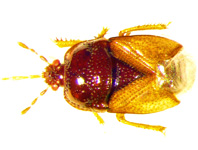Abstract
Tadpole morphology usually is consistent within taxa and ecologies (Altig & Johnston 1989), but the occurrences of unique morphologies offer informative perspectives on the potential diversity of these structures. Anstis (2013) characterized most of the tadpoles of Australia, but a thorough understanding of certain morphological features requires closer examinations. Until we understand the morphological features of anuran larvae, and preferably their ontogeny, we cannot productively discuss their evolution or ecological significance.
References
Altig, R. (2007) A primer for the morphology of anuran tadpoles. Herpetological Conservation and Biology, 2, 73–76.
Altig, R. & Johnston, G.F. (1989) Guilds of anuran larvae: relationships among developmental modes, morphologies, and habitats. Herpetological Monographs, 3, 81–109.
http://dx.doi.org/10.2307/1466987Altig, R. & McDiarmid, R.W. (2006) Descriptions and biological notes on three unusual mantellid tadpoles (Amphibia: Anura: Mantellidae) from southeastern Madagascar. Proceedings of the Biological Society of Washington, 119, 279–286.
http://dx.doi.org/10.2988/0006-324X(2006)119[418:DABNOT]2.0.CO;2Anstis, M. (2013) Tadpoles and Frogs of Australia. New Holland Publishers, Sydney, 832 pp.
Anstis, M. & Littlejohn, M.J. (1996) The breeding biology of Litoria subglandulosa and L. citropa (Anura: Hylidae) and a reevaluation of their geographic distribution. Transactions of the Royal Society of South Australia, 120, 83–99.
Gosner, K.L. (1960) A simplified table for staging anuran embryos and larvae with notes on identification. Herpetologica, 16, 183–190.
Thibaudeau, D.G. & Altig, R. (1988) Sequence of ontogenetic development and atrophy of the oral apparatus of six anuran tadpoles. Journal of Morphology, 197, 63–69.
http://dx.doi.org/10.1002/jmor.1051970106Tyler, M.J. & Anstis, M. (1975) Taxonomy and biology of the Litoria citropa complex (Anura: Hylidae). Records of the South Australian Museum, 17, 41–50.

